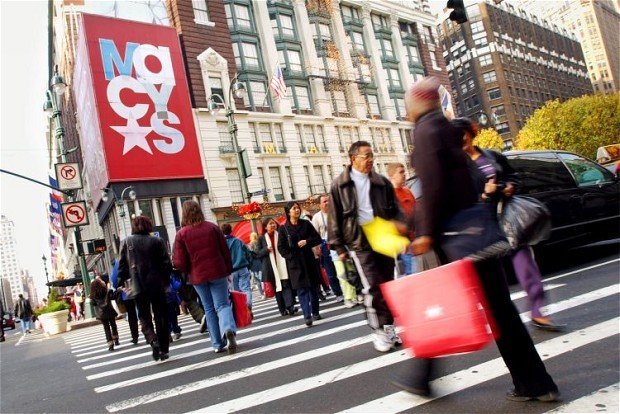Last-minute spending surge lifts U.S. holiday shopping season

A jump in consumer spending in the final stretch of December significantly offset a slow start to the U.S. holiday shopping season, and is likely to help many retailers beat sales forecasts, industry research groups said on Tuesday
The December spending boost is in contrast to a muted November, when early holiday promotions and expectations among consumers that deals would always be available took a toll. Spending over the Thanksgiving weekend in November fell 3.5 percent from a year ago despite a strong jump in online sales, according to the National Retail Federation.
“It was a hot start with Cyber Monday, followed by a lull for the last couple of weeks and then a big-bang finish,” said Pete Madden, a director at retail consultancy AlixPartners.
Sales data released on Tuesday showed the major shift in fortunes in late Decembe. Brick-and-mortar sales in the week ending Dec. 24 rose 6.5 percent year-over-year after having fallen for the rest of the month, according to data from analytics firm RetailNext.
Strong demand for furniture, home furnishings and men’s apparel from the start of November through Christmas Eve pushed U.S. retail sales up 4 percent, higher than the previously expected 3.8 percent, according to data from MasterCard’s holiday spending report, also released on Tuesday. The report, which tracks spending by combining sales activity in MasterCard’s payments network with estimates of cash and other payment forms, offers an early look into how the holiday season shaped up.
Official government data and results from retailers will not be available until next month. The jump in spending prompted a prominent retail consultant to raise his holiday sales forecast. Craig Johnson, president of consultancy Customer Growth Partners, told Reuters that he now estimates sales growth of 4.9 percent in November and December, up from his initial estimate of 4.1 percent.
Johnson said he expects this year to be the strongest since 2005, and sales momentum is likely to remain strong until the New Year. There is growing evidence that an improving job market, lower gasoline prices and growing consumer optimism all contributed to the surge.
President-elect Donald Trump attributed the spending increased to his impending arrival at the White House.
“The world was gloomy before I won – there was no hope. Now the market is up nearly 10 percent and Christmas spending is over a trillion dollars!” Trump wrote on Twitter.
Whatever the reason, shoppers remained ebullient. Despite the late-December surge, not every retailer will benefit. Department stores like Macy’s, J.C. Penney, Kohl’s Corp and others are still heavily discounting items, as growth in women’s apparel remained weak. J.C. Penney offered the deepest average discount level of any retailer this year, according to retail pricing and data analytics firm Market Track.
Jewelry retailers also had a lackluster season that could hurt the likes of Tiffany & Co and Signet Jewelers, industry groups said.
The verdict on electronics as a category remained mixed. MasterCard said electronics sales were weak while analytics firm Slice Intelligence said electronics was a top revenue-earner, with Best Buy and Apple Inc gaining share the week leading up to Christmas.
The biggest beneficiary of the holiday season continued to be Amazon.com Inc, which outperformed its rivals again this year, research firms said. Amazon on Tuesday called the holiday season its “best ever.”





